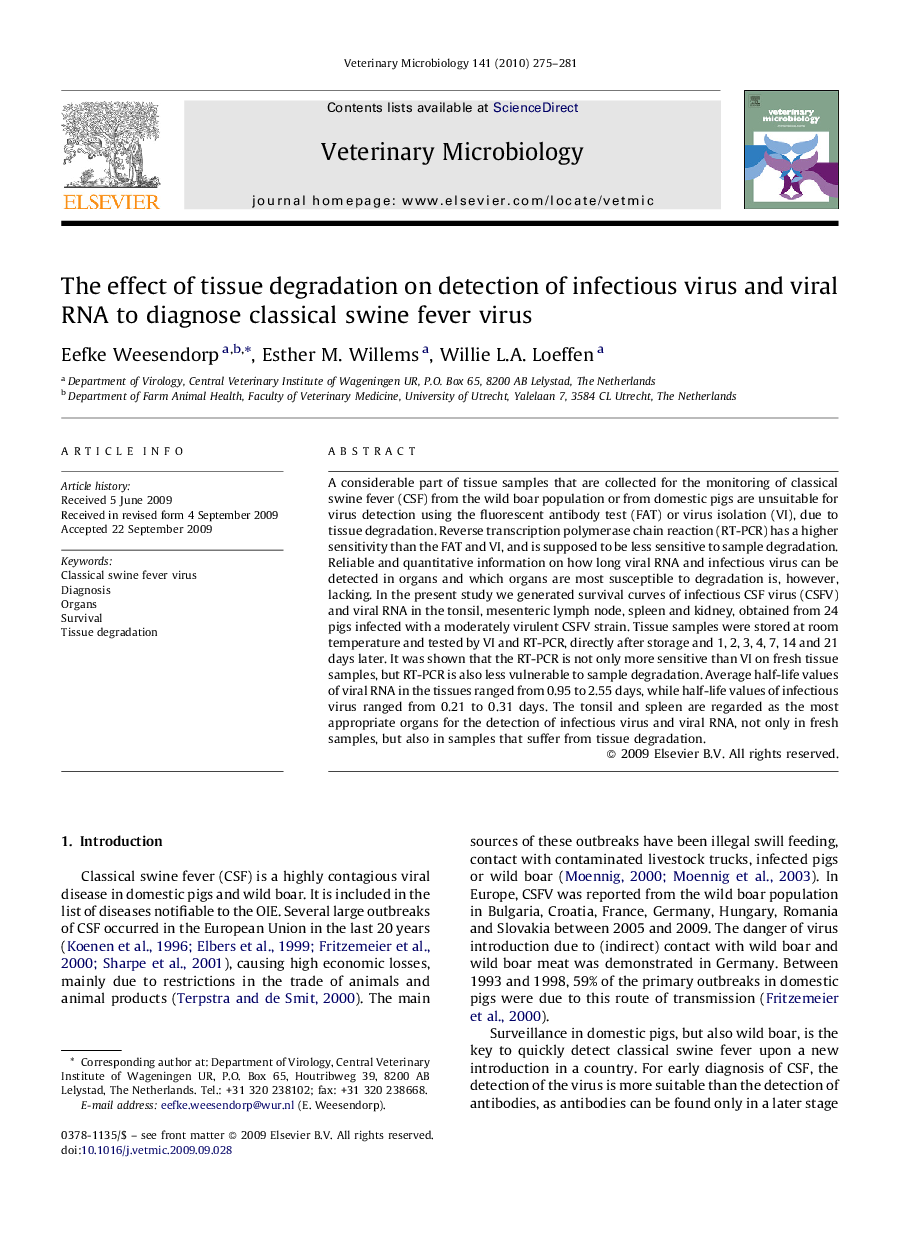| کد مقاله | کد نشریه | سال انتشار | مقاله انگلیسی | نسخه تمام متن |
|---|---|---|---|---|
| 2467810 | 1555416 | 2010 | 7 صفحه PDF | دانلود رایگان |

A considerable part of tissue samples that are collected for the monitoring of classical swine fever (CSF) from the wild boar population or from domestic pigs are unsuitable for virus detection using the fluorescent antibody test (FAT) or virus isolation (VI), due to tissue degradation. Reverse transcription polymerase chain reaction (RT-PCR) has a higher sensitivity than the FAT and VI, and is supposed to be less sensitive to sample degradation. Reliable and quantitative information on how long viral RNA and infectious virus can be detected in organs and which organs are most susceptible to degradation is, however, lacking. In the present study we generated survival curves of infectious CSF virus (CSFV) and viral RNA in the tonsil, mesenteric lymph node, spleen and kidney, obtained from 24 pigs infected with a moderately virulent CSFV strain. Tissue samples were stored at room temperature and tested by VI and RT-PCR, directly after storage and 1, 2, 3, 4, 7, 14 and 21 days later. It was shown that the RT-PCR is not only more sensitive than VI on fresh tissue samples, but RT-PCR is also less vulnerable to sample degradation. Average half-life values of viral RNA in the tissues ranged from 0.95 to 2.55 days, while half-life values of infectious virus ranged from 0.21 to 0.31 days. The tonsil and spleen are regarded as the most appropriate organs for the detection of infectious virus and viral RNA, not only in fresh samples, but also in samples that suffer from tissue degradation.
Journal: Veterinary Microbiology - Volume 141, Issues 3–4, 24 March 2010, Pages 275–281